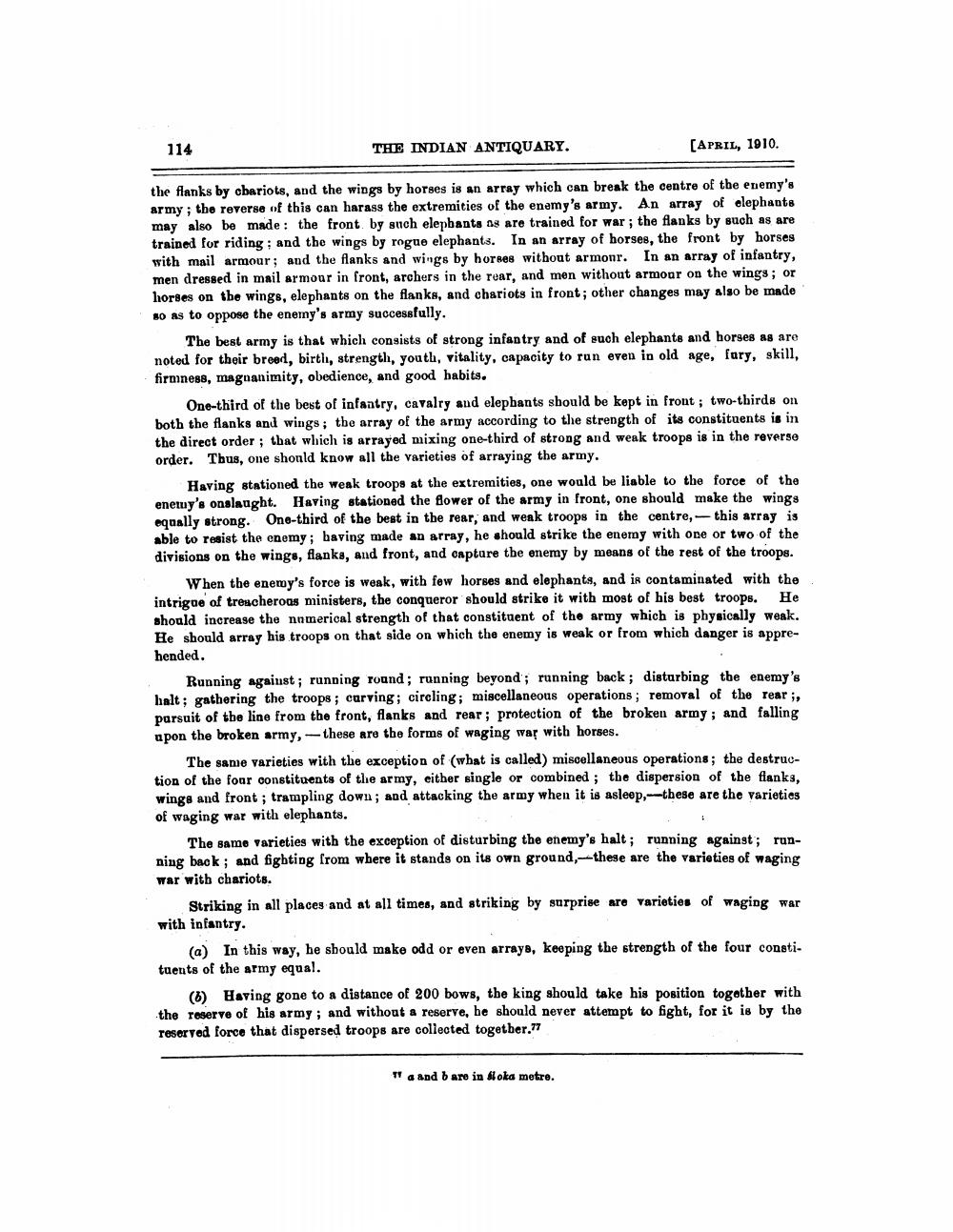________________
114
THE INDIAN ANTIQUARY.
[APRIL, 1910.
the flanks by chariots, and the wings by horses is an array which can break the centre of the enemy's army; the reverse of this can harass the extremities of the enemy's army. An array of elephants may also be made the front by such elepbants as are trained for war; the flanks by such as are trained for riding; and the wings by rogue elephants. In an array of horses, the front by horses with mail armour; and the flanks and wings by horses without armour. In an array of infantry, men dressed in mail armour in front, archers in the rear, and men without armoar on the wings; or horses on the wings, elephants on the flanks, and chariots in front; other changes may also be made 10 As to oppose the enemy's army successfully.
The best army is that which consists of strong infantry and of such elephants and horses as are noted for their breed, birth, strength, youth, vitality, capacity to run even in old age, fary, skill, firmness, magnanimity, obedience, and good habits.
One-third of the best of infantry, cavalry and elephants should be kept in front; two-thirds on both the flanks and wings; tbe array of the army according to the strength of its constituents is in the direct order ; that which is arrayed mixing one-third of strong and weak troops is in the reverse order. Thus, one shonld know all the varieties of arraying the army.
Having stationed the weak troops at the extremities, one would be liable to the force of the enemy's onslaught. Having stationed the flower of the army in front, one should make the wings equally strong. One-third of the best in the rear, and weak troops in the centre, - this array is able to resist the enemy; having made an array, he should strike the enemy with one or two of the divisions on the wings, flanks, and front, and capture the enemy by means of the rest of the troops.
When the enemy's force is weak, with few horses and elephants, and in contaminated with the intrigue of treucheroas ministers, the conqueror should strike it with most of his best troops. He should increase the numerical strength of that constituent of the army which is physically weak. He should array his troops on that side on which the enemy is weak or from which danger is apprehended.
Running against; running round; running beyond; running back; distarbing the enemy's halt; gathering the troops ; carving; circling; miscellaneous operations; removal of the rear ;, parsuit of the line from the front, flanks and rear; protection of the broken army; and falling upon the broken army, - these are the forms of waging war with horses.
The same varieties with the exception of what is called) miscellaneous operations; the destruction of the four constituents of the army, either single or combined ; the dispersion of the fianks, wings and front; trampling down; and attacking the army when it is asleep, these are the varieties of waging war with elephants.
The samo varieties with the exception of disturbing the enemy's halt; running against; running back; and fighting from where it stands on its own ground, these are the varieties of waging war with chariots.
Striking in all places and at all timen, and striking by surprise are varieties of waging war with infantry.
(a) In this way, he should make odd or even arrays, keeping the strength of the four constituents of the army equal.
(6) Having gone to a distance of 200 bows, the king should take his position together with the reserve of his army; and without a reserve, he should never attempt to fight, for it is by the reserved force that dispersed troops are collected togetber.77
Ta and b are in foka metre.




